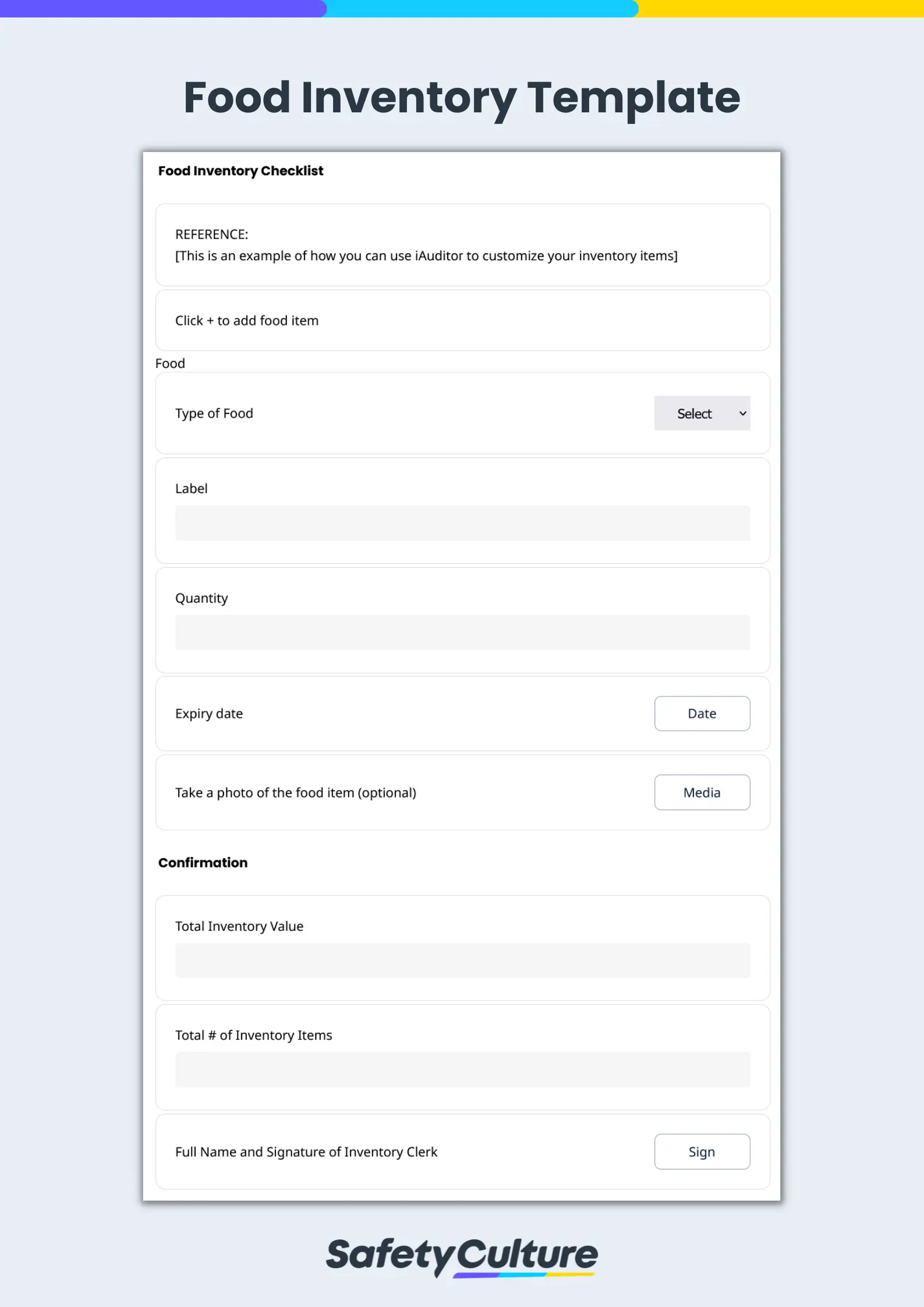What is a Food Inventory Template?
A food inventory template is a tool to help people keep track of their food, beverages, and ingredients in stock. This is often used by those in the food industry such as restaurants, cafes, and hotels. There are many ways to keep track of one’s food inventory, but having a template to do so can be a big help for the business.
Why Use a Food Inventory Template?
Proper inventory management is an integral part of anyone managing food as it is a major aspect of daily operations. A minor detail overlooked in the inventory can not only lead to unexpected shortage should a restaurant be lacking ingredients, but also unnecessary costs in the long run from having to constantly overstock when not needed.
Reduce Food Waste
Having a food inventory template can help reduce instances of food waste. A study shows that, in the United States, more than a hundred billion pounds of food are lost to food waste, with restaurants generating an estimated waste of 22 to 33 billion pounds, and institutions such as schools, hotels, and hospitals contribute another additional 7 to 11 billion pounds per year.
Food can be lost through inefficient management in packing houses and manufacturing plants wherein they are not accounted for properly, or get damaged during transportation. Other times, food waste occurs when there is miscommunication between businesses because one or both of them failed to properly take account of stocks, which leads to food being thrown out even if they are already paid for.
Save Time and Money
With a food inventory template, groceries can avoid overstocking, and restaurants can avoid over-preparing and failing to utilize existing ingredients properly. Groceries are estimated by the USDA to lose $15 billion yearly in unsold fruit and vegetables alone, not yet accounting for canned goods, dairy products, and frozen foods. Households, on the other hand, lose $1,800 per year to food waste.
Sometimes, restaurants and households also fail to properly note the shelf lives of food items and their ideal shelving conditions, leading to them never being consumed or becoming spoiled and unsalvageable. This may also lead to health risks for those who still unwittingly consume expired food, or are exposed to bacteria when trying to salvage them.
Work More Efficiently
Listing the exact amount of food needed before and after making a purchase is a very important step in food inventory. Not only do businesses save on extra costs by avoiding overbuying or producing food waste, but having a food inventory template ensures that managers and business owners can properly organize their storage spaces for the inventory, allocating the proper labels and shelves for efficiency. This reduces the time needed to sort through the inventories during work hours, leaving more time for other tasks.
In using a food inventory template, businesses can also improve their customer service. If their stocks are properly managed, then they can better serve their customers and satisfy them with proper food servings, ingredients, and quality.
Making a Food Inventory Template
There are many ways to create a food inventory template. Although each template may vary depending on one’s needs, a basic food inventory template usually has the following details:
- types of certain food or ingredients needed;
- how many should be in storage;
- their expiration dates; and
- how much do they cost.
How to Use a Food Inventory Template
Often, food inventories are done with a checklist or a table. A checklist, however, is preferable as it would be easier to do once on the go. It is also easier to modify as needed.
Using a checklist would also make it easier for both the assigned inspector and their managers to stay on the same page. It is important they have the same checklist to better identify issues and stay on the same page as they would have similar standards and expectations.
Food inventory checks should be done routinely as well. It can be done daily, weekly, or monthly, once or twice a day. This way, they can be stocked or organized ahead of time, and not when things are about to run out or expire.
It would be advisable to create a food inventory template online so it could be easily accessible anywhere and everywhere. While paper-based food inventory templates can be familiar and convenient at first, they lack the centralization and ease of instant communication that digital templates can offer.



